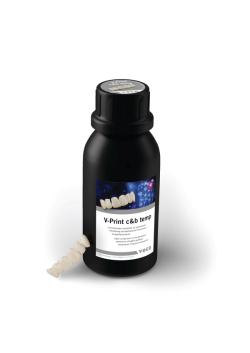- About Us
- Advertise
- Editorial
- Contact Us
- Terms and Conditions
- Privacy Policy
- Do Not Sell My Personal Information
© 2025 MJH Life Sciences™ and Dental Products Report. All rights reserved.
Supporting a Crown: Building Up Your Patient’s Core
We look at what matters most when selecting materials to replace lost tooth structure and support a crown.
Your patient’s core buildup replaces tooth structure under the crown where no one will see it. However, even though it’s underneath the crown, the composition of the core buildup material could influence the restoration outcome.
Core buildups used to be made of amalgam. Today, dental composite resins and resin-modified glass ionomers tend to occupy the space under the crown. However, there are any number of types of composite resin that you could use, and even some that are specifically designed to support a crown. So, how do you know what to choose? We look at the materials available and what features you should look for to support a crown.
Research Suggests the Stronger the Better
Studies suggest that core buildup materials should mimic tooth structure regarding hardness and resistance to fracture. Other properties essential in core buildup materials are that they are strong enough to withstand multi-directional chewing forces exerted upon them under the crown and should be able to handle the crown preparation process with a rotary cutting instrument. Per the Journal of Applied Oral Science, the best resin materials for use with posts are those with high filler content because they help “enhance fracture thresholds of teeth.”1
Per the Journal of Contemporary Clinical Dentistry, strength is one of the most important criteria to consider when choosing a direct core buildup material; the stronger, the better. Since few studies had compared the strength of core materials, the journal’s study compared the mean compressive strength, diametral tensile strength, flexural strength, and elastic modulus. The researchers compared a few composites for strength, including visible light-cured composite, polyacid modified composite, resin-modified glass ionomer, and high copper amalgam and silver cement. They observed significant differences in compressive, diametral tensile, and flexural strength, with visible light-cured composite coming out on top in the study. The researchers determined that when dentists use more substantial materials for core buildups, they resist deformation and fracture, provide more excellent stability, and distribute stress more equitably. They concluded that more substantial core buildup materials increased the probability of clinical success.2
In 2020, researchers in Biomaterial Investigations in Dentistry performed an in-vitro comparative study of core buildup resin composites for flexural properties. They chose core buildup resin composites that were dual-, light-, or self-cured to compare against conventional light-cure composites (from 3M ESPE, Dentsply, DMG, GC, Ivoclar-Vivadent, Kuraray, Septodont, Ultradent, and VOCO). The researchers discovered that the light-curing on a dual-cure core buildup material significantly influenced flexural modulus but not flexural strength. Their results also indicated significant differences between the types of core buildup materials regarding flexural modulus and flexural strength. The highest flexural modulus was seen in light-cure resin composites but identified no clear winner for flexural strength. They also saw a linear correlation between inorganic fillers content for flexural modulus but not flexural strength. The researchers concluded that highly filled, light-cured materials were the “most appropriate” for core buildups. They also determined that self-and dual-cure core buildup materials with lower inorganic filler content were inappropriate for replacing dentin in significant tissue loss cases. They also recommend using inorganic filler content as an easier way to decide which materials to use for core buildups.3
Practical Dentistry Takes a Different View on Material Choices
Jason Goodchild, DMD, Vice President of Clinical Affairs for Premier Dental Products Company, describes a core buildup as a direct restoration designed to be part of the crown preparation. When it comes to materials for core buildups, Dr Goodchild chooses based on the appropriate characteristic for the case. Like the studies suggest, strength might be the most important characteristic for the core buildup material in some cases, but handling might be the most critical for others.
For example, many core buildups occur after a root canal treatment. So, if the core buildup follows a root canal and goes down into the root with a post, Dr Goodchild might use a dual-cure composite material. That way, he explains, if the light cannot get down deep enough to cure the material, the chemical cure component of the dual-cure composite can handle it for him. However, if he gets an endodontically treated tooth with concerted access that leaves a small hole, Dr Goodchild might use regular light-cured composite as he does for direct restorations.
“What core build-up material am I going to use?There are a lot of unknowns until you see the situation clinically,” Dr Goodchild says.
Dr Goodchild says that dentists can often use any material they want depending on what they are looking at size- and depth-wise. For small to moderate preparations, he likes SureFil® SDR® (Dentsply Sirona) because it adapts easily to the cavity and is highly radiopaque.
However, Dr Goodchild thinks there are many other core buildup materials that are good, too, especially when the hole is more extensive. For example, he says Premier’s CompCore™ AF Dual-Cure performs well for compressive and tensile strength, and also has good radiopacity. Plus, it cuts like a natural tooth. However, he also recently used a flowable for a core buildup because the replacement area wasn’t that extensive, and the material was already handy in the operatory.
Other manufacturers have materials that are specifically for core build ups, too. BISCO’s Core buildup materials include Light-Core™, a light cured core build up composite, Core-Flo™ DC, a dual-cured, radiopaque composite with an auto-mix syringe, and Core-Flo™ DC Lite, which is designed to cement posts and buildup the core in one application. VOCO has Rebilda® DC Core Buildup Composite, a flowable adhesive composite with Fluoride release, and Grandio® Core Dual Cure, which is a dual-cure buildup material marketed as a luting agent for root posts in addition to buildup material. Denstply Caulk has Fluorocore 2+ Dual Cure Core Build-up Material, which also is fluoride releasing and dual cure.
When it comes to the ideal characteristics of the materials, Dr Goodchild values more than only strength. In addition, he likes ease of placement so he can get the material into the areas to bond with the remaining tooth structure, radiopacity so he can see where the buildup material is on x-rays, and fluoride-releasing to help prevent future caries in the restoration. The most significant factor in Dr Goodchild’s material choice, however, is the ability to place the material.
“We can’t forget that the basic crown & bridge principles will still apply, and you must have crown margins on teeth. So, it’s great to have buildup materials that are strong, absolutely, all day, every day. But I think we can have strong at the expense of handling, and the buildup material still needs to handle well,” Dr Goodchild explains. “So, to me, strength is one of the components, but not the whole thing.”
What To Remember about Supporting a Crown with a Core Buildup
Whatever you choose for materials, Dr Goodchild says it is essential to know how to use them quickly and effectively. Since crowns are a standard procedure and a significant source of revenue for the practice, the materials you choose should also increase efficiency. That’s why Dr Goodchild says that dual-cure materials are excellent for core buildups because you can fill up the whole cavity and prep with it or do the entire core in 1 step.
“I always say that in dentistry, we get good at doing things the same way and not by doing them differently every single time,” Dr Goodchild says. “I do the same kind of crown preps because I know how to do them very well.”
However, Dr Goodchild isn’t saying that there is only 1 way to replace the missing tooth structure to support a crown. Instead, he feels that every dentist probably has a few different ways of doing things because they have delivered consistent positive results and clinicians generally use the same materials and techniques in the various approaches.
Dr Goodchild also likes to “match up the rights.” Matching up the rights refers to using the right materials for the right clinical indication on the right patient. For example, maybe you want fluoride for this patient. On the other hand, perhaps you need to go deep into the tooth, so you want dual-cure, or you need to ensure that the build-up shows up on radiograph, so you emphasize radiopacity.
“Matching up all the rights lets you use those materials to their fullest potential,” Dr Goodchild says. “
Dr Goodchild thinks that it is critical to take a back-to-basics approach on technique. Every dentist has removed a crown and seen work where compromises were made.In some cases, the crown prep might not be what you consider acceptable, or it was not reduced enough. Maybe the finish lines are hard to read, or they’re ending on restorative material instead of the tooth.
“In 2021, we have unbelievable materials that do a lot of things for us. We have materials that are very forgiving that we can place in all different environments,” Dr Goodchild says. “But it doesn’t mean we can shortcut basic principles.”
References
- Panitiwat P, Salimee P. Effect of different composite core materials on fracture resistance of endodontically treated teeth restored with FRC posts. J Appl Oral Sci. 2017;25(2):203-210. doi:10.1590/1678-77572016-0306
- Kumar G, Shivrayan A. Comparative study of mechanical properties of direct core buildup materials. Contemp Clin Dent. 2015;6(1):16-20. doi:10.4103/0976-237X.149285
- L. Spinhayer, A.T.B. Bui, J.G. Leprince & C.M.F. Hardy (2020) Core buildup resin composites: an in-vitro comparative study, Biomaterial Investigations in Dentistry, 7:1, 159-166, DOI: 10.1080/26415275.2020.1838283



